Abstract
The relationship between the salivary concentration of bacteria and their number that can be recovered from tooth surfaces has been studied in 12 human subjects. The mean salivary concentration of naturally occurring Steptococcus mutans and lactobacilli, determined on selective media, was 3.7 × 105 and 3.8 × 105 colony-forming units (CFU) per ml, respectively. In subjects with salivary concentrations of S. mutans of about 104 CFU/ml or less or about 105 CFU/ml or less of lactobacilli, these organisms could not be isolated from cleaned teeth after 2 to 3 h of oral exposure. In experiments with streptomycin-labeled S. sanguis cells held in the mouth for 15 min, the minimal salivary concentration required for their recovery from the teeth was about 103 CFU/ml. Both S. mutans and lactobacilli were found to be highly localized on teeth. This evidence suggests that the concentrations of S. mutans and lactobacilli generally present in saliva are insufficient for the initiation of their firm attachment to relatively nonretentive tooth surfaces. The low efficiency of their intraoral spread, as suggested by their highly localized distribution on teeth, or of their transmission between subjects may be essentially due to the interrelated factors bacterial affinity and number of colony-forming units available for attachment.
Full text
PDF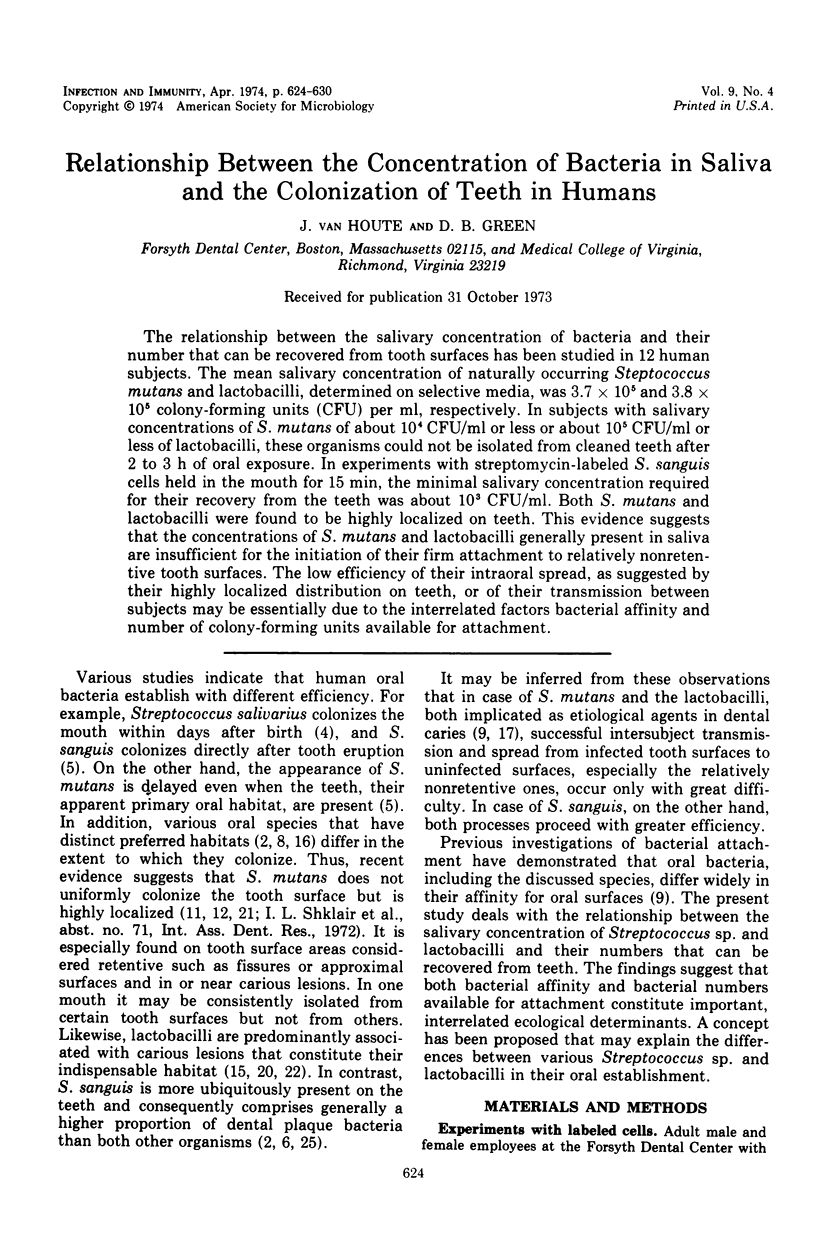
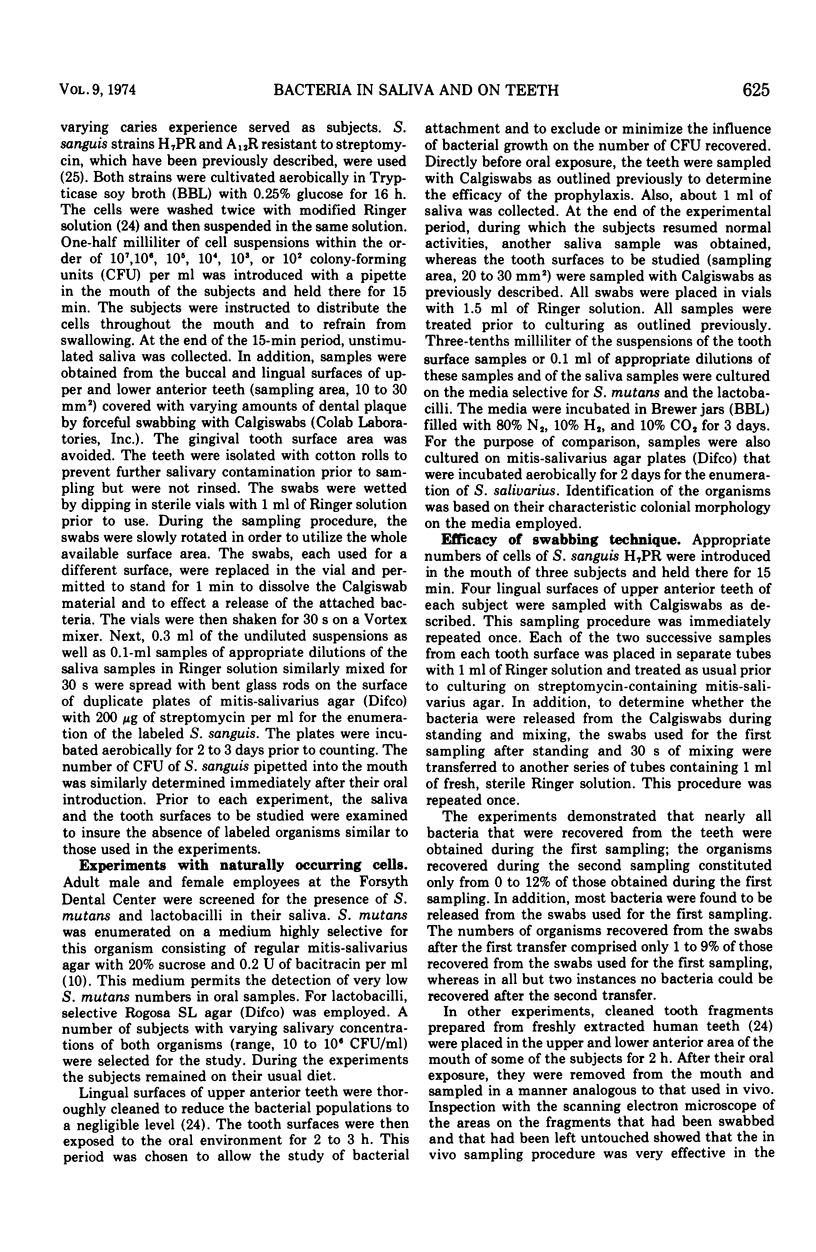
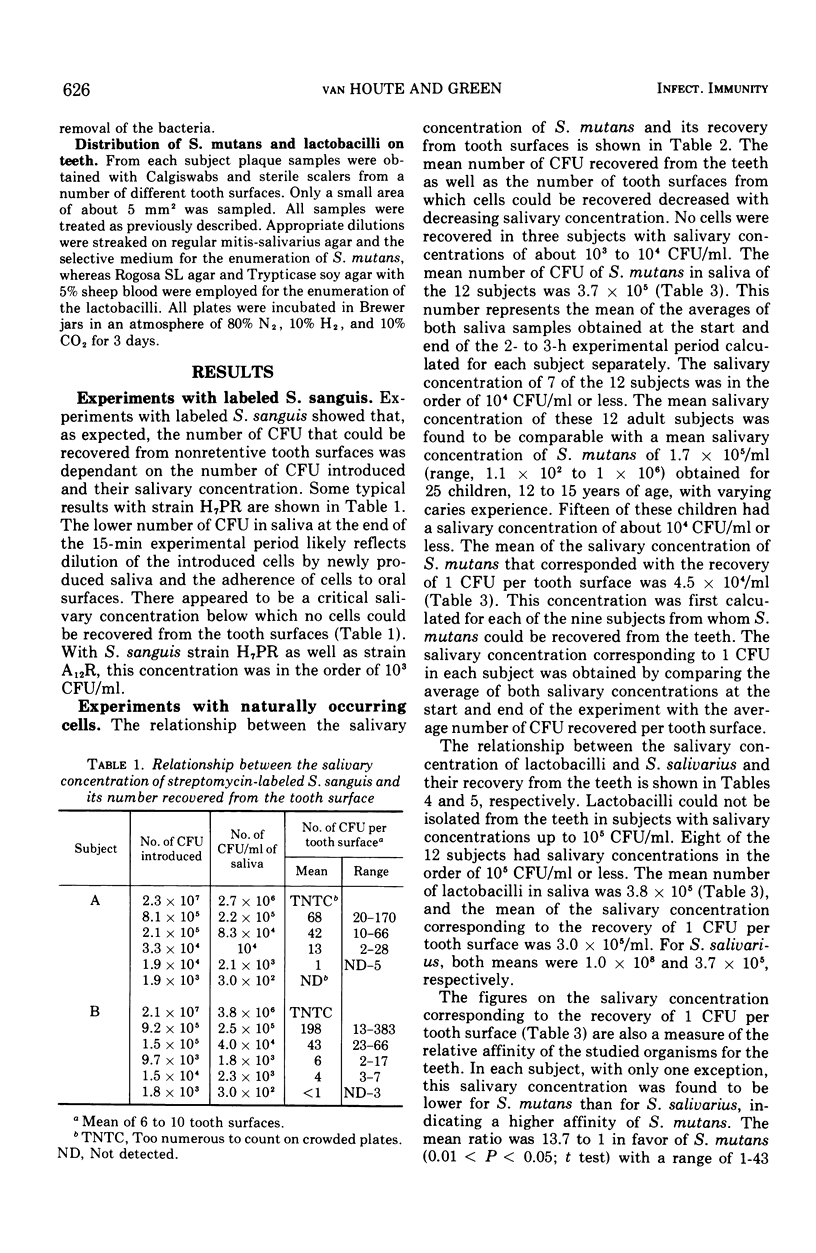
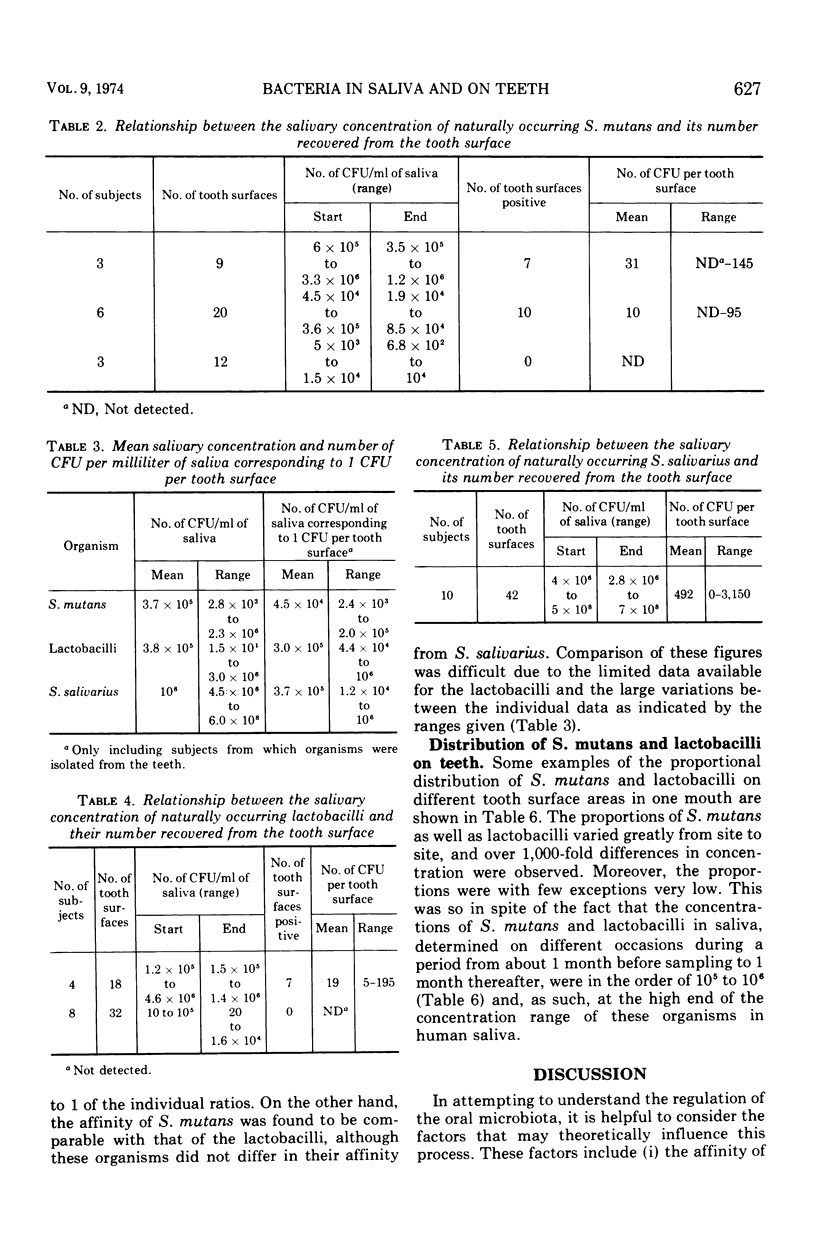
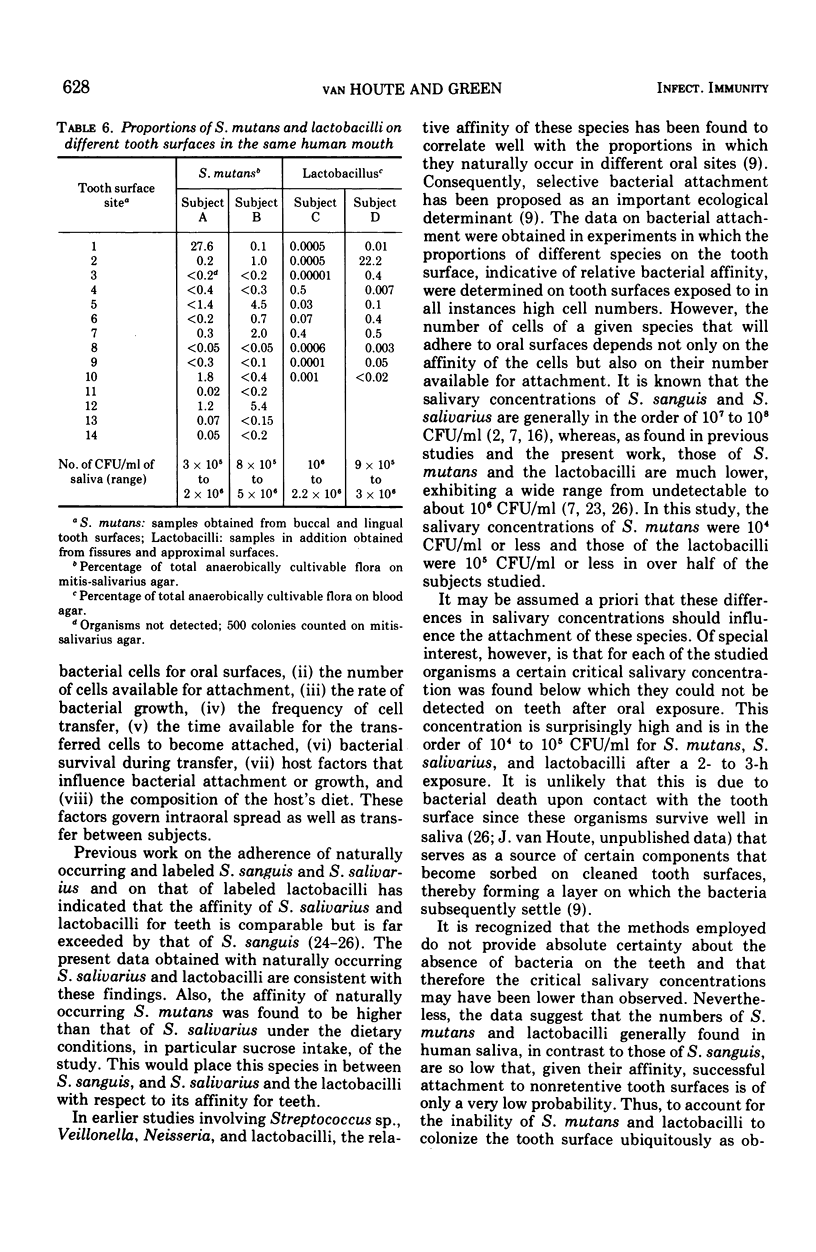
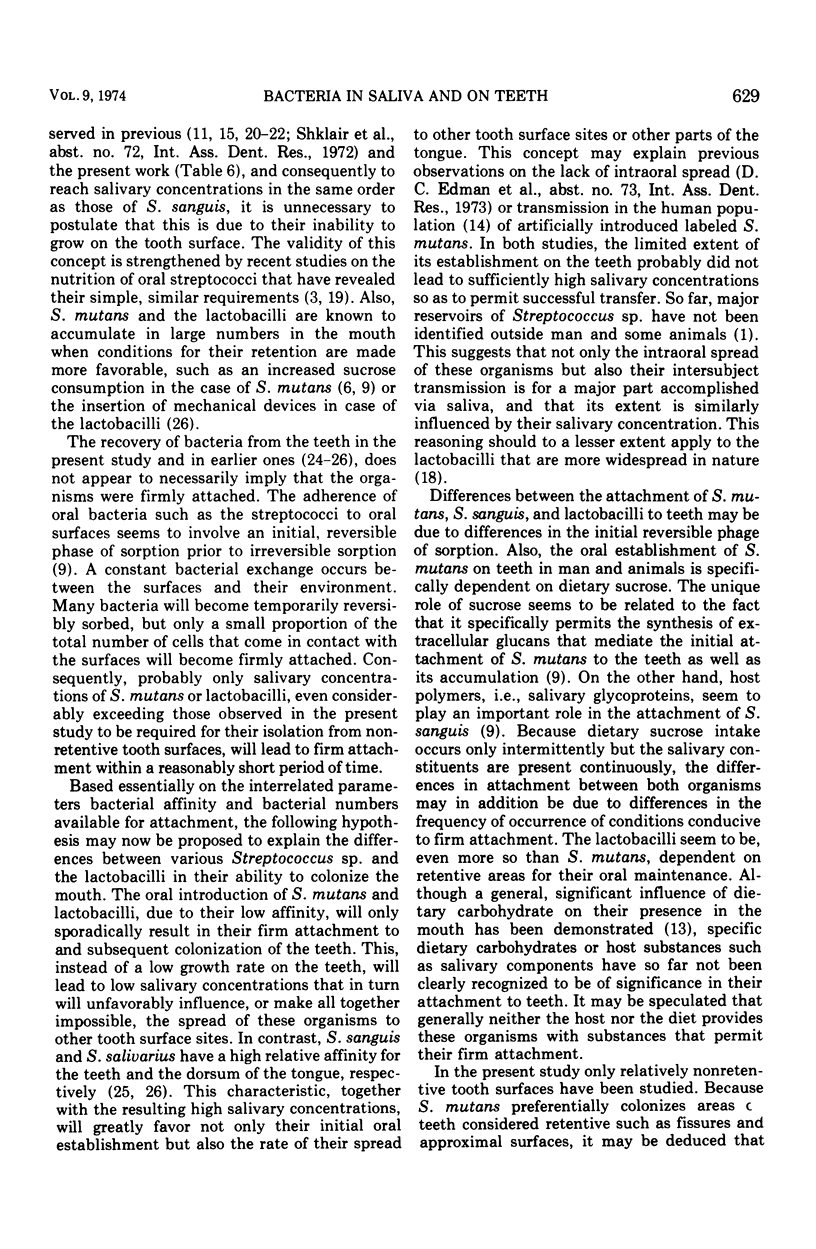
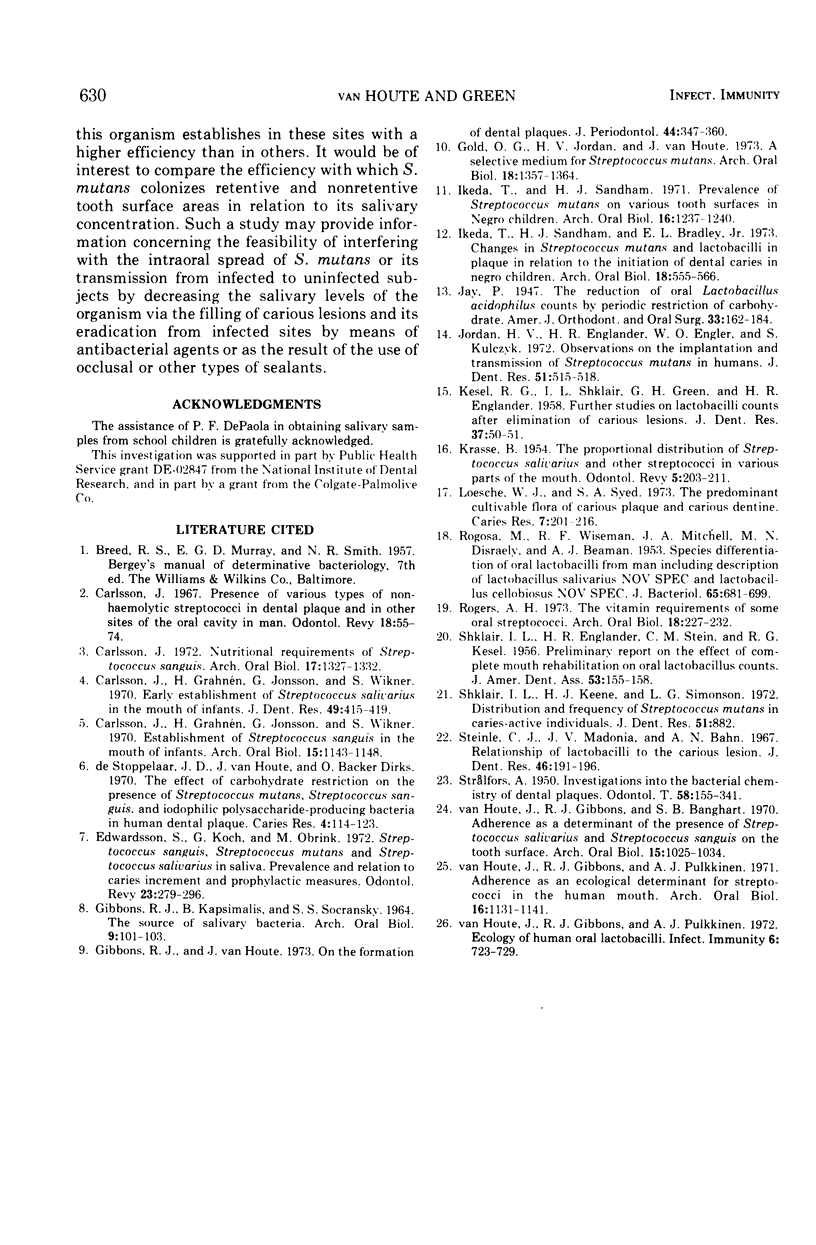
Selected References
These references are in PubMed. This may not be the complete list of references from this article.
- Carlsson J., Grahnén H., Jonsson G., Wikner S. Early establishment of Streptococcus salivarius in the mouth of infants. J Dent Res. 1970 Mar-Apr;49(2):415–418. doi: 10.1177/00220345700490023601. [DOI] [PubMed] [Google Scholar]
- Carlsson J., Grahnén H., Jonsson G., Wikner S. Establishment of Streptococcus sanguis in the mouths of infants. Arch Oral Biol. 1970 Dec;15(12):1143–1148. doi: 10.1016/0003-9969(70)90005-1. [DOI] [PubMed] [Google Scholar]
- Carlsson J. Nutritional requirements of Streptococcus sanguis. Arch Oral Biol. 1972 Sep;17(9):1327–1332. doi: 10.1016/0003-9969(72)90165-3. [DOI] [PubMed] [Google Scholar]
- Carlsson J. Presence of various types of non-haemolytic streptococci in dental plaque and in other sites of the oral cavity in man. Odontol Revy. 1967;18(1):55–74. [PubMed] [Google Scholar]
- De Stoppelaar J. D., Van Houte J., Backer DIRKS O. The effect of carbohydrate restriction on the presence of Streptococcus mutans, Streptococcus sanguis and iodophilic polysaccharide-producing bacteria in human dental plaque. Caries Res. 1970;4(2):114–123. doi: 10.1159/000259633. [DOI] [PubMed] [Google Scholar]
- Edwardsson S., Koch G., Obrink M. Strep. sanguis, Strep. mutans and Strep. salivarius in saliva. Prevalence and relation to caries increment and prophylactic measures. Odontol Revy. 1972;23(3):279–296. [PubMed] [Google Scholar]
- GIBBONS R. J., KAPSIMALIS B., SOCRANSKY S. S. THE SOURCE OF SALIVARY BACTERIA. Arch Oral Biol. 1964 Jan-Feb;9:101–103. doi: 10.1016/0003-9969(64)90052-4. [DOI] [PubMed] [Google Scholar]
- Gibbons R. J., van Houte J. On the formation of dental plaques. J Periodontol. 1973 Jun;44(6):347–360. doi: 10.1902/jop.1973.44.6.347. [DOI] [PubMed] [Google Scholar]
- Gold O. G., Jordan H. V., Van Houte J. A selective medium for Streptococcus mutans. Arch Oral Biol. 1973 Nov;18(11):1357–1364. doi: 10.1016/0003-9969(73)90109-x. [DOI] [PubMed] [Google Scholar]
- Ikeda T., Sandham H. J. Prevalence of Streptococcus mutans on various tooth surfaces in Negro children. Arch Oral Biol. 1971 Oct;16(10):1237–1240. doi: 10.1016/0003-9969(71)90053-7. [DOI] [PubMed] [Google Scholar]
- Jordan H. V., Englander H. R., Engler W. O., Kulczyk S. Observations on the implantation and transmission of Streptococcus mutans in humans. J Dent Res. 1972 Mar-Apr;51(2):515–518. doi: 10.1177/00220345720510024501. [DOI] [PubMed] [Google Scholar]
- KRASSE B. The proportional distribution of Streptococcus salivarius and other streptococci in various parts of the mouth. Odontol Revy. 1954;5(3):203–211. [PubMed] [Google Scholar]
- Loesche W. J., Syed S. A. The predominant cultivable flora of carious plaque and carious dentine. Caries Res. 1973;7(3):201–216. doi: 10.1159/000259844. [DOI] [PubMed] [Google Scholar]
- Rogers A. H. The vitamin requirements of some oral streptococci. Arch Oral Biol. 1973 Feb;18(2):227–232. doi: 10.1016/0003-9969(73)90142-8. [DOI] [PubMed] [Google Scholar]
- SHKLAIR I. L., ENGLANDER H. R., STEIN L. M., KESEL R. G. Preliminary report on the effect of complete mouth rehabilitation on oral lactobacilli counts. J Am Dent Assoc. 1956 Aug;53(2):155–158. doi: 10.14219/jada.archive.1956.0159. [DOI] [PubMed] [Google Scholar]
- Shklair I. L., Keene H. J., Simonson L. G. Distribution and frequency of streptococcus mutants in caries-active individuals. J Dent Res. 1972 May-Jun;51(3):882–882. doi: 10.1177/00220345720510034201. [DOI] [PubMed] [Google Scholar]
- Steinle C. J., Madonia J. V., Bahn A. N. Relationship of lactobacilli to the carious lesion. J Dent Res. 1967 Jan-Feb;46(1):191–196. doi: 10.1177/00220345670460010901. [DOI] [PubMed] [Google Scholar]
- Van Houte J., Gibbons R. J., Banghart S. B. Adherence as a determinant of the presence of Streptococcus salivarius and Streptococcus sanguis on the human tooth surface. Arch Oral Biol. 1970 Nov;15(11):1025–1034. doi: 10.1016/0003-9969(70)90115-9. [DOI] [PubMed] [Google Scholar]
- Van Houte J., Gibbons R. J., Pulkkinen A. J. Adherence as an ecological determinant for streptococci in the human mouth. Arch Oral Biol. 1971 Oct;16(10):1131–1141. doi: 10.1016/0003-9969(71)90042-2. [DOI] [PubMed] [Google Scholar]
- Van Houte J., Gibbons R. J., Pulkkinen A. J. Ecology of human oral lactobacilli. Infect Immun. 1972 Nov;6(5):723–729. doi: 10.1128/iai.6.5.723-729.1972. [DOI] [PMC free article] [PubMed] [Google Scholar]


